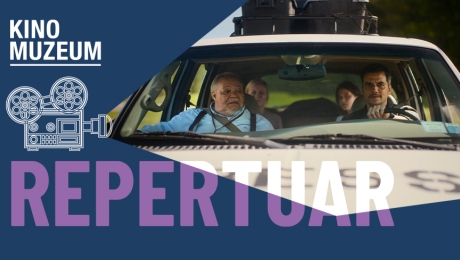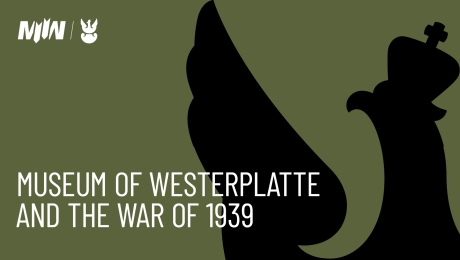ABOUT THE INVESTMENT
The main goal of the investment being carried out at Westerplatte is to create an open-air museum that tells the story of the heroic struggle of the Poles in September 1939. The character of the entire project will allow for the creation of exhibitions within the original historical space, primarily based on authenticated relics of the past, surrounded by an authentic landscape. Archaeological research is also being conducted in parallel with investment activities.
I. Completed Actions
Between September and October 2022, the work related to the construction of the Polish Soldiers' Cemetery, which began in May 2022, was completed.
The cemetery has preserved its previous park-like character. It was built in a circular plan and consists of 18 stelae with burial places. In its center, there is a monument in the form of the Virtuti Militari cross, and on the outskirts, the Dąbrowski cross is placed. After dark, the lighting of the facility is turned on, creating a suitable atmosphere and emphasizing the surrounding relics.
Near the cemetery, there are preserved fragments of the officer's villa (glass has been used to expose its basement) and guardhouse No. 5. Part of the historical communication route from 1939 has also been recreated.
In the place where the remains of soldiers were found, white rose bushes have been planted, which bloom from late summer to early autumn. The crater from a bomb dropped on September 2nd, 1939, in the northeast corner of guardhouse No. 5, is marked with decorative grasses.
On November 4th, 2022, the defenders of the Military Transit Depot were buried in the new cemetery.
II. Actions in Progress
Currently, work is underway to modernize the former power plant building. The area where the building is located was until recently owned by the Military Property Agency.
Construction work, which began in September 2022, aims to improve the technical and aesthetic condition of the building and its immediate surroundings. The investment also includes changes to the development of the area around the former power plant. The completion of the work is scheduled for the third quarter of 2023.
The facility will be adapted for exhibition purposes. It will house an archaeological exhibition covering the history of the peninsula from its inception, the operation of the resort, the defense of the Polish outpost, and the situation of the depot immediately after the battles. This narrative will be supported by relics discovered during archaeological research conducted at Westerplatte since 2016.
The design work for the exhibition in the former power plant building is being carried out by the winner of the ‘Competition for the Development of the Concept of the Archaeological Exhibition titled 'Westerplatte: Memory Engraved in the Earth'. The contract for the project was signed in January 2023. The opening of the exhibition, as well as the accessibility of the facility to visitors, is planned for the turn of 2023 and 2024.
III. Planned Actions
As part of the investment activities aimed at building an open-air museum, the following have been planned:
• Construction of a multi-space parking lot for cars and buses and a multifunctional Tourist Traffic Service Point building before entering the WST area. The building will serve as an information and service center for tourists visiting the peninsula and the Westerplatte and 1939 War Museum, as well as a space for educational and animated activities. Construction work is planned to start in the third quarter of 2023.
• Revitalization of the entire accessible area of the Westerplatte battlefield.
• Reconstruction of selected historical buildings, including the stationmaster's building, warehouses No. 1, 8, 9, 10-12, and the fortifications of the second line of warehouses.
• Preservation of the remaining relics of buildings, including warehouses No. 2, 3, and 4, old barracks, NCOs' mess, administrative building, gasoline depot, the red wall (fragment), 10th-anniversary monument, an artillery position, and the Mikołajewo facility.
• Restoration and conservation of surviving historical buildings, including new barracks, guardhouse No. 3, the "Fort" outpost, breakwaters, facilities included in the fortifications and Szańca Mewiego, as well as post-war military facilities, also listed in the register of monuments – a shelter and the battery tower of permanent artillery (BAS).
• Renovation and modernization of the Coastal Defenders' Monument.
• Construction of an exhibition pavilion in the western part of the peninsula, with approximately 3000 m2 of space allocated for a permanent exhibition.
To implement these actions (excluding the development of Szańca Mewiego, which is planned for a subsequent stage of the investment, and the parking lot with the Tourist Traffic Service Point building – this scope will be implemented separately), the Museum of the Second World War announced a two-stage architectural and urban competition in February 2023 for the development of the project concept for the Westerplatte and 1939 War Museum – a branch of the Museum of the Second World War in Gdańsk.
The announcement of the competition results is scheduled for October 2023. The winner will have the opportunity to sign a contract for project work related to the construction of the Westerplatte and 1939 War Museum.
At the same time, the Museum of the Second World War is preparing to announce a competition for the conceptual design of the permanent exhibition for the Westerplatte branch. The exhibition's narrative will be based on the authenticity of the battlefield where World War II began and the readiness of Polish soldiers to defend their homeland. The exhibition will feature existing relics of the battlefield, movable exhibits from the museum's collection and from other collections (taking into account storage and presentation requirements, as well as conservation guidelines). The use of archival materials, both in physical and digital form, is also planned.
The fundamental value of Westerplatte lies in the remnants of the original cultural landscape of the former Military Transit Depot. Despite significant changes to the terrain and the destruction of the facility – mainly after World War II – a network of relics still exists there. This provides the opportunity to create an open-air museum. The Westerplatte and 1939 War Museum will combine a modern exhibition character with preserved relics and the symbolism of the place where World War II began, making it a unique institution on the map of Poland and Europe.
The construction of the Westerplatte and 1939 War Museum – a branch of the Museum of the Second World War in Gdańsk – is financed by a targeted grant from the Minister of Culture and National Heritage.











